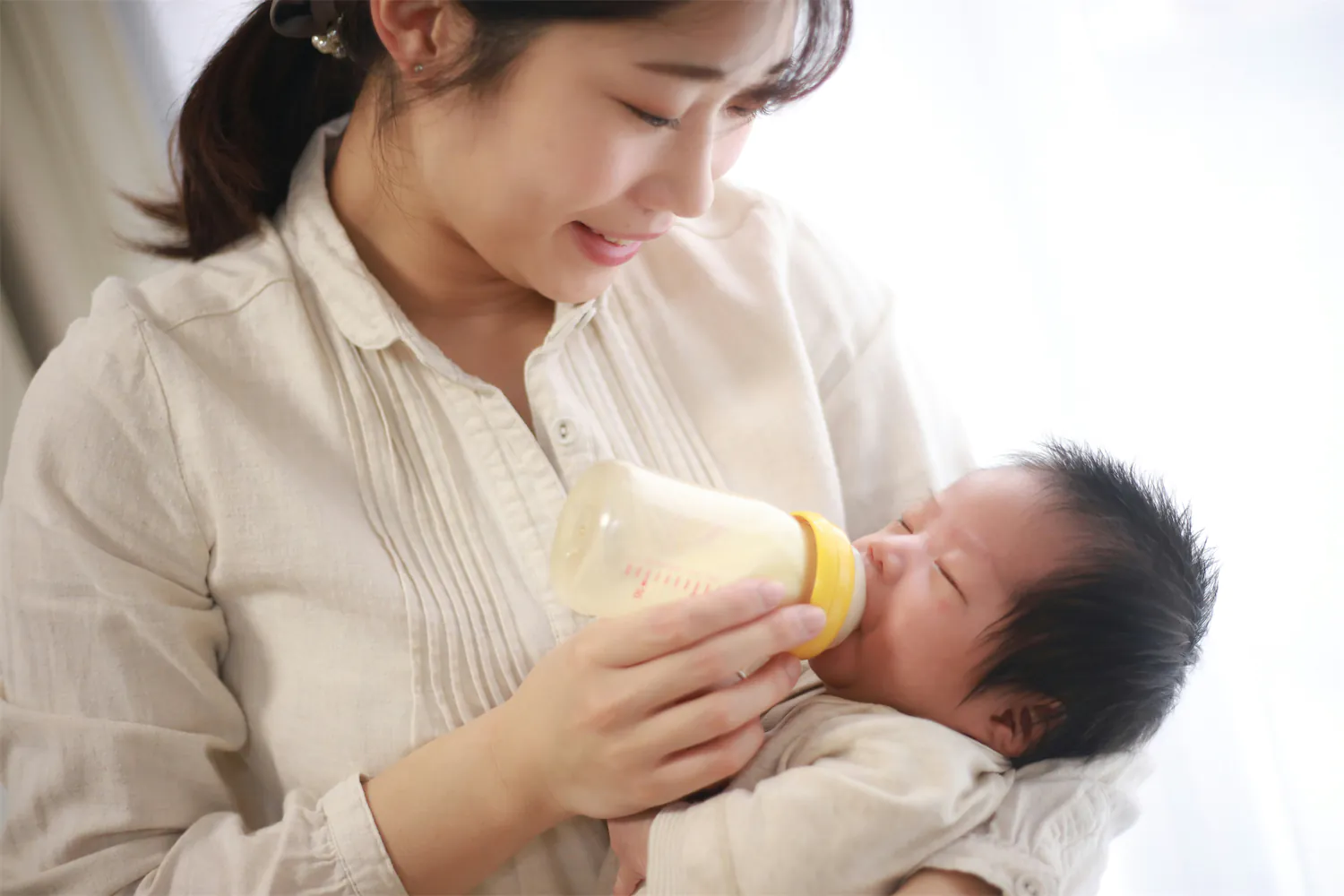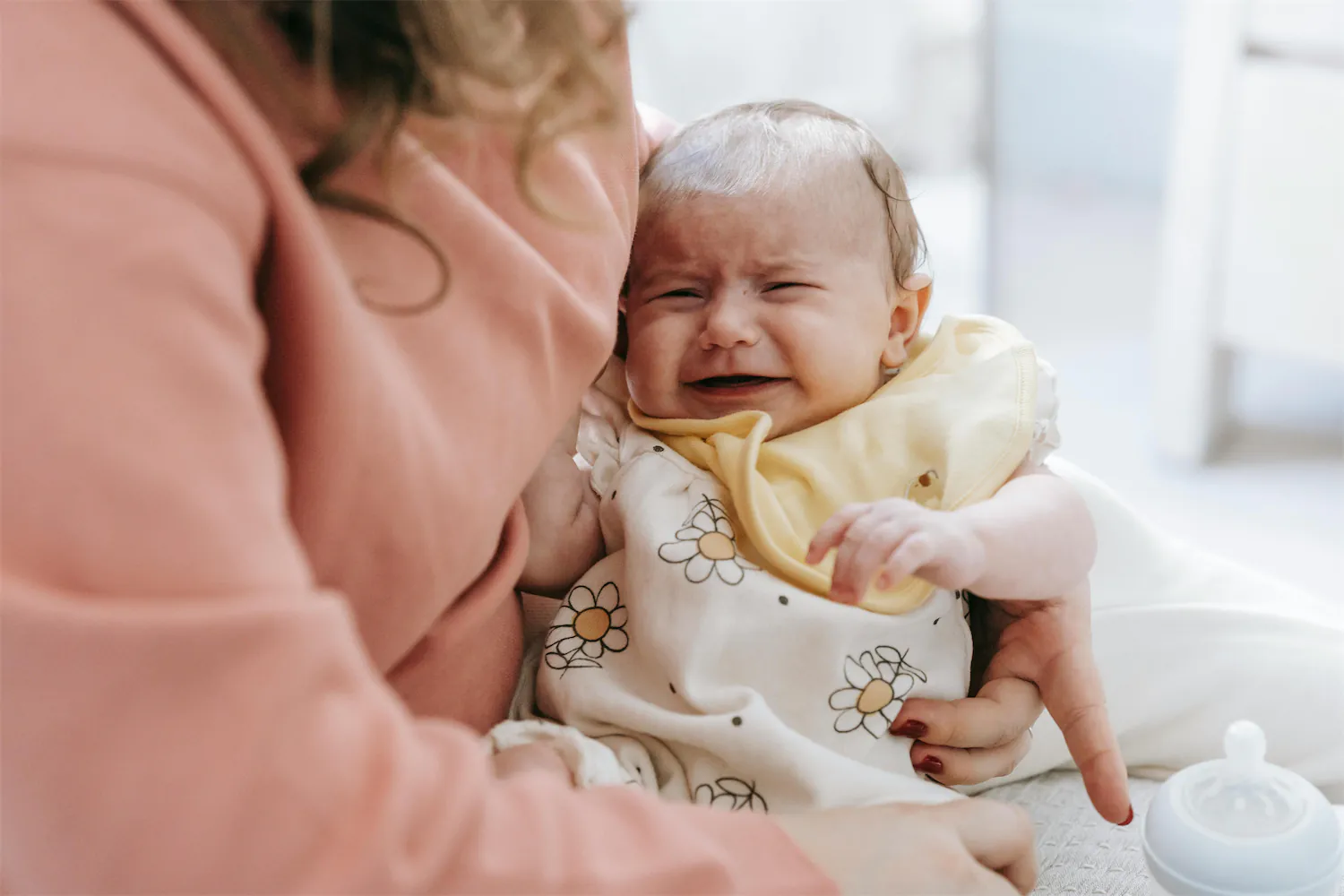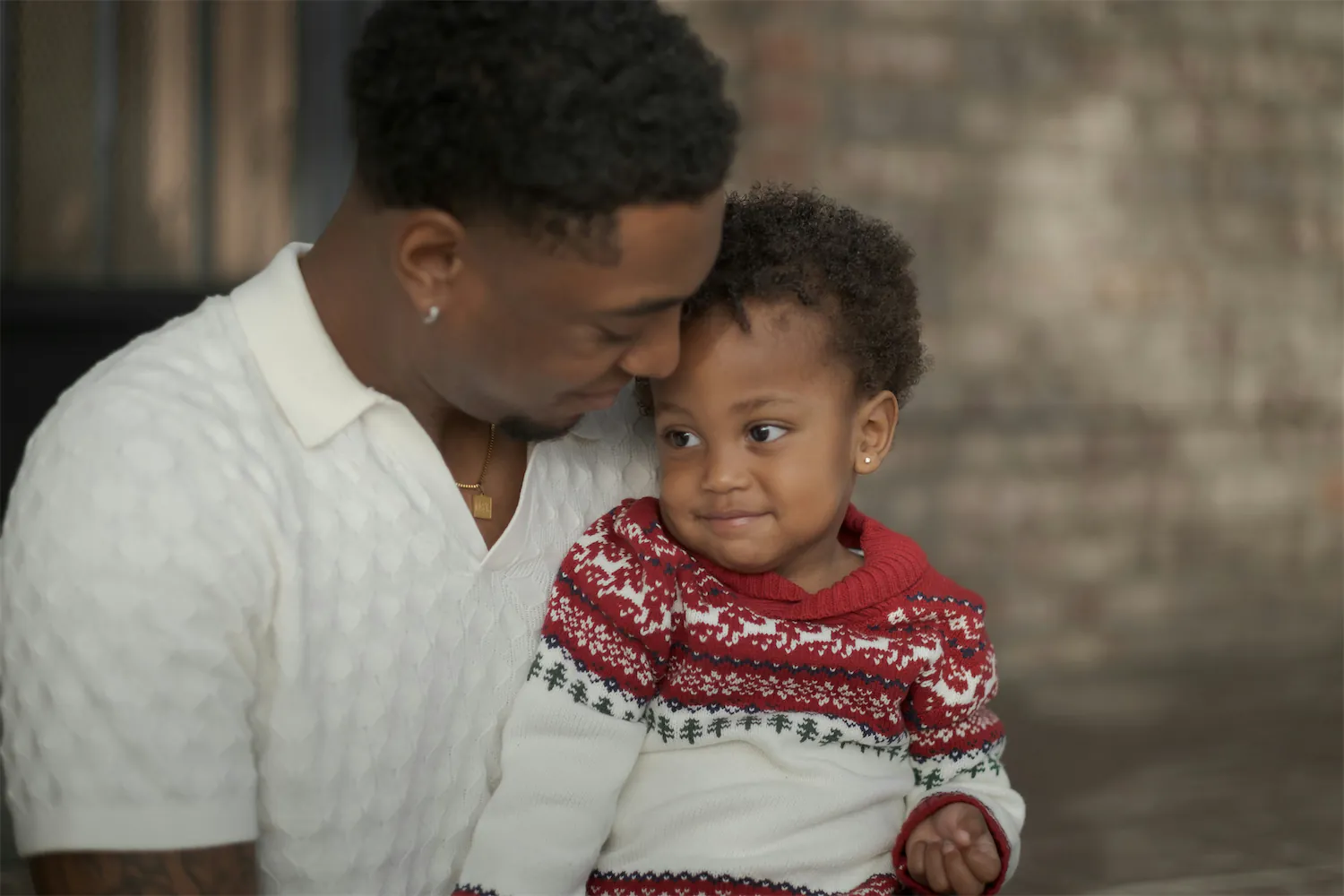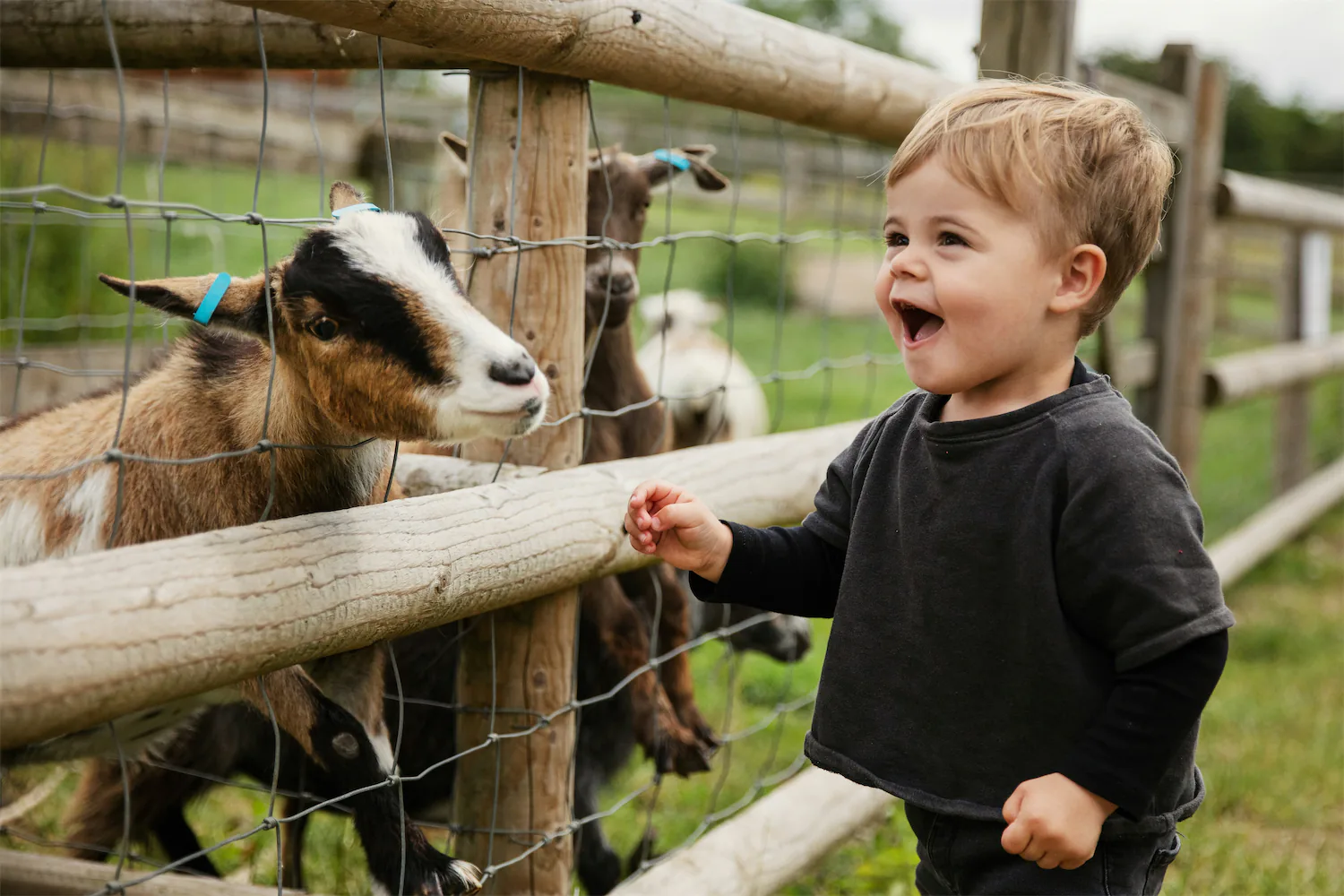Understanding iron deficiency in infants: Symptoms & signs of anemia
Understanding iron deficiency in infants: Symptoms & signs of anemia
In the US, more than 7% of children between ages 1 and 5 have iron deficiency, and just over 1% have iron deficiency anemia. Not knowing whether your child has enough iron can be worrisome. So we asked one of Summer Health’s esteemed pediatricians — Marcy Borieux, MD, FAAP — to share her wisdom about iron deficiency and iron deficiency anemia in infants to help answer your questions and ease your concerns. Remember, if you have questions about your individual child, Dr. Marcy and the Summer Health experts are just a text away.
In the US, more than 7% of children between ages 1 and 5 have iron deficiency, and just over 1% have iron deficiency anemia. Not knowing whether your child has enough iron can be worrisome. So we asked one of Summer Health’s esteemed pediatricians — Marcy Borieux, MD, FAAP — to share her wisdom about iron deficiency and iron deficiency anemia in infants to help answer your questions and ease your concerns. Remember, if you have questions about your individual child, Dr. Marcy and the Summer Health experts are just a text away.

Megan N. Freeland, PharmD
Content Writer

Dr. Marcy Borieux
Pediatrician



What is iron deficiency?
Our bodies use iron to make hemoglobin, an important protein found in red blood cells that carries oxygen from the lungs to the rest of our bodies. Without enough iron, your child’s body can’t make enough hemoglobin. So they won’t have enough red blood cells to carry oxygen throughout their body and they may develop anemia.
What is the difference between iron deficiency and iron deficiency anemia?
You’ll often hear the terms “iron deficiency” and “iron deficiency anemia” used interchangeably. But technically, they are different. An infant can have iron deficiency, without having anemia, and vice versa.
Lack of iron is known as iron deficiency. But when this lack of iron leads to your child not having enough hemoglobin and healthy red blood cells, this is known as iron deficiency anemia. Iron deficiency is the most common cause of anemia.
What causes iron deficiency in infants?
Infant iron stores
You can think of iron stores as the amount of iron a person — in this case, an infant or child — has saved up in their body. Iron is stored in various places, including the spleen and the liver.
The third trimester of pregnancy is when babies build up most of their iron stores via the placenta. So babies who are born full-term are usually born with enough iron stores to help them make the red blood cells they need for the first 6 months of their lives. Babies who are born preterm, with low birth weights, or with blood loss often have lower iron stores and will use up their iron stores more quickly.
Iron in an infant’s diet
At about 6 months old, many babies start solids. Around the same time, full-term babies’ iron stores from birth are likely low, if not completely depleted. This is an important stage because the food your little one eats will become an important source of iron for them and will be necessary for preventing iron deficiency and potential anemia.
Causes of iron deficiency and causes of anemia related to iron deficiency
So what might cause an infant to become iron deficient? There are a few possible reasons.
1. Not enough iron in your baby’s diet after 6 months of age: While there is some iron in breastmilk, the most is present during month one and then decreases over time. After month 6 — or whenever your baby starts solids — their foods should be rich in vitamins like:
Iron
Zinc
Phosphorus
Magnesium
Calcium
Vitamin B6
Iron-rich foods include meats, fish, and eggs, and most of the iron your child needs should be provided by solid foods. If your child doesn't get enough iron-rich foods, a pediatrician may recommend or prescribe iron supplements or iron-fortified formulas.
2. Too much cow’s milk: Cow’s milk is typically introduced at age 1. It typically has less iron than breast milk, and can even disrupt your baby’s ability to absorb iron. Plus, in some babies who are sensitive to cow’s milk, microscopic blood loss can occur. Blood loss means red blood cells, hemoglobin, and iron are being lost, which can contribute to anemia and make matters worse.
3. Physical growth spurts: Together, with low iron in the diet and the rapid growth that happens during a growth spurt, your child’s iron stores may be more quickly depleted.
4. Medical conditions in the gastrointestinal (GI) tract: GI conditions like peptic ulcers can affect how well your baby’s body is able to absorb iron.
5. Blood loss: Blood loss — whether through GI bleeds, menstruation, or other forms — results in direct loss of red blood cells, hemoglobin, and iron. Identifying and addressing blood loss, or at least making up for it with iron supplementation or eating more iron-rich foods, may be helpful for your child.
How does iron deficiency progress to iron deficiency anemia?
Over time, iron deficiency can lead to iron deficiency anemia. Here’s how.
Let’s start with a look at iron deficiency without anemia. If a baby doesn’t get enough iron, their body’s iron stores will be low. With low iron stores, their hemoglobin levels may stay normal, but levels of two proteins called ferritin and transferrin will be low.
Iron is stored as ferritin in the body, and transferrin is a protein that carries iron to different tissues in the body. These proteins don’t show up on a standard blood draw, however, so you and your pediatrician may not know the exact status of your baby’s iron stores without additional testing.
Now, here’s where iron deficiency anemia comes in. Once a baby’s iron stores are depleted, if they aren’t getting enough iron from their diet, then not only will they be iron deficient, but their hemoglobin levels will also decrease into anemic territory. The specific range of hemoglobin levels that are considered normal, versus a sign of anemia, will vary by age.
Dr. Marcy offers some encouragement for parents: It can be concerning to hear your baby has iron deficiency anemia, however it is often caught early at routine well baby visits, or with sick visits if your child has symptoms of iron deficiency anemia. It is also easily treated with the right balance of nutrient-rich foods and supplements.
Consequences of iron deficiency anemia in infants and children
Whether or not complications of iron deficiency and iron deficiency anemia can last long into the future is a question scientists are still trying to get clarity on. Some studies suggest that in cases of severe anemia, complications can be irreversible and may last years after the anemia is solved.
Nonetheless, it’s a fact that iron is essential to a baby’s normal growth and development and plays a significant role in their brain and immune system development. So it’s important to prioritize iron in your baby’s diet. Low iron levels can cause lower-than-normal attention spans, low levels of alertness, learning problems, and other complications.
What are the symptoms of anemia?
According to Dr. Marcy, in most cases, an infant with mild anemia will present without symptoms. But if they do have anemia symptoms, common ones could include:
Paleness in the skin
Irritability
Lethargy (extreme tiredness, fatigue, weakness, or low energy)
Poor feeding or eating less
Trouble sleeping
Pica
Pica is when someone craves and eats non-food items, like dirt, ice, clay, or crayons. This symptom would be most relevant in toddlers and older children.
More severe cases could result in symptoms of anemia like:
A blue tint or pale look to the whites of a child’s eyes
Frail, brittle nails
Paleness in the skin
If you notice any of these symptoms of anemia, you should speak with your pediatrician about them. Attending well-baby visits regularly is also important for early detection if your baby’s iron levels are low.
Diagnosing and treating iron deficiency anemia in infants and children
Hemoglobin and diagnosing childhood iron deficiency anemia
Per Dr. Marcy, a hemoglobin blood test is often used as a screening test for iron deficiency anemia. After the initial screening, if necessary, a pediatrician may order other labs — like a complete blood count (CBC) or iron panel.
The American Academy of Pediatrics (AAP) recommends that at the 12 month (1 year) checkup, all infants have a hemoglobin blood test and an assessment to identify any risks for iron deficiency anemia. But children of any age may have a blood test for anemia, especially if their hemoglobin levels are low or if they have any risk factors for iron deficiency anemia like feeding problems or poor growth.
Treating childhood iron deficiency anemia: How do you fix anemia in babies?
Treatment of iron deficiency anemia in infants and children can vary, according to Dr. Marcy. It's all about helping your child take in more iron, through their diet and, if needed, through iron supplementation. Treatment options include:
Prescription iron supplements
Iron-fortified formulas
Iron-fortified infant cereals
Breast milk
Iron-rich foods for babies who are eating solids
Vitamin C-rich foods, since Vitamin C is critical for absorbing iron
Managing iron deficiency and anemia caused by iron deficiency
Anemia caused by iron deficiency — and even iron deficiency without anemia — may be tied to long-term brain and behavioral health effects for children as they grow up. And these complications may not be reversible. So it’s especially important to prevent iron deficiency altogether and to treat it quickly if it does happen to avoid progressing into anemia.
You can always text a Summer Health pediatrician for medical advice specific to your child, including questions about iron supplements and iron-rich foods.
What is iron deficiency?
Our bodies use iron to make hemoglobin, an important protein found in red blood cells that carries oxygen from the lungs to the rest of our bodies. Without enough iron, your child’s body can’t make enough hemoglobin. So they won’t have enough red blood cells to carry oxygen throughout their body and they may develop anemia.
What is the difference between iron deficiency and iron deficiency anemia?
You’ll often hear the terms “iron deficiency” and “iron deficiency anemia” used interchangeably. But technically, they are different. An infant can have iron deficiency, without having anemia, and vice versa.
Lack of iron is known as iron deficiency. But when this lack of iron leads to your child not having enough hemoglobin and healthy red blood cells, this is known as iron deficiency anemia. Iron deficiency is the most common cause of anemia.
What causes iron deficiency in infants?
Infant iron stores
You can think of iron stores as the amount of iron a person — in this case, an infant or child — has saved up in their body. Iron is stored in various places, including the spleen and the liver.
The third trimester of pregnancy is when babies build up most of their iron stores via the placenta. So babies who are born full-term are usually born with enough iron stores to help them make the red blood cells they need for the first 6 months of their lives. Babies who are born preterm, with low birth weights, or with blood loss often have lower iron stores and will use up their iron stores more quickly.
Iron in an infant’s diet
At about 6 months old, many babies start solids. Around the same time, full-term babies’ iron stores from birth are likely low, if not completely depleted. This is an important stage because the food your little one eats will become an important source of iron for them and will be necessary for preventing iron deficiency and potential anemia.
Causes of iron deficiency and causes of anemia related to iron deficiency
So what might cause an infant to become iron deficient? There are a few possible reasons.
1. Not enough iron in your baby’s diet after 6 months of age: While there is some iron in breastmilk, the most is present during month one and then decreases over time. After month 6 — or whenever your baby starts solids — their foods should be rich in vitamins like:
Iron
Zinc
Phosphorus
Magnesium
Calcium
Vitamin B6
Iron-rich foods include meats, fish, and eggs, and most of the iron your child needs should be provided by solid foods. If your child doesn't get enough iron-rich foods, a pediatrician may recommend or prescribe iron supplements or iron-fortified formulas.
2. Too much cow’s milk: Cow’s milk is typically introduced at age 1. It typically has less iron than breast milk, and can even disrupt your baby’s ability to absorb iron. Plus, in some babies who are sensitive to cow’s milk, microscopic blood loss can occur. Blood loss means red blood cells, hemoglobin, and iron are being lost, which can contribute to anemia and make matters worse.
3. Physical growth spurts: Together, with low iron in the diet and the rapid growth that happens during a growth spurt, your child’s iron stores may be more quickly depleted.
4. Medical conditions in the gastrointestinal (GI) tract: GI conditions like peptic ulcers can affect how well your baby’s body is able to absorb iron.
5. Blood loss: Blood loss — whether through GI bleeds, menstruation, or other forms — results in direct loss of red blood cells, hemoglobin, and iron. Identifying and addressing blood loss, or at least making up for it with iron supplementation or eating more iron-rich foods, may be helpful for your child.
How does iron deficiency progress to iron deficiency anemia?
Over time, iron deficiency can lead to iron deficiency anemia. Here’s how.
Let’s start with a look at iron deficiency without anemia. If a baby doesn’t get enough iron, their body’s iron stores will be low. With low iron stores, their hemoglobin levels may stay normal, but levels of two proteins called ferritin and transferrin will be low.
Iron is stored as ferritin in the body, and transferrin is a protein that carries iron to different tissues in the body. These proteins don’t show up on a standard blood draw, however, so you and your pediatrician may not know the exact status of your baby’s iron stores without additional testing.
Now, here’s where iron deficiency anemia comes in. Once a baby’s iron stores are depleted, if they aren’t getting enough iron from their diet, then not only will they be iron deficient, but their hemoglobin levels will also decrease into anemic territory. The specific range of hemoglobin levels that are considered normal, versus a sign of anemia, will vary by age.
Dr. Marcy offers some encouragement for parents: It can be concerning to hear your baby has iron deficiency anemia, however it is often caught early at routine well baby visits, or with sick visits if your child has symptoms of iron deficiency anemia. It is also easily treated with the right balance of nutrient-rich foods and supplements.
Consequences of iron deficiency anemia in infants and children
Whether or not complications of iron deficiency and iron deficiency anemia can last long into the future is a question scientists are still trying to get clarity on. Some studies suggest that in cases of severe anemia, complications can be irreversible and may last years after the anemia is solved.
Nonetheless, it’s a fact that iron is essential to a baby’s normal growth and development and plays a significant role in their brain and immune system development. So it’s important to prioritize iron in your baby’s diet. Low iron levels can cause lower-than-normal attention spans, low levels of alertness, learning problems, and other complications.
What are the symptoms of anemia?
According to Dr. Marcy, in most cases, an infant with mild anemia will present without symptoms. But if they do have anemia symptoms, common ones could include:
Paleness in the skin
Irritability
Lethargy (extreme tiredness, fatigue, weakness, or low energy)
Poor feeding or eating less
Trouble sleeping
Pica
Pica is when someone craves and eats non-food items, like dirt, ice, clay, or crayons. This symptom would be most relevant in toddlers and older children.
More severe cases could result in symptoms of anemia like:
A blue tint or pale look to the whites of a child’s eyes
Frail, brittle nails
Paleness in the skin
If you notice any of these symptoms of anemia, you should speak with your pediatrician about them. Attending well-baby visits regularly is also important for early detection if your baby’s iron levels are low.
Diagnosing and treating iron deficiency anemia in infants and children
Hemoglobin and diagnosing childhood iron deficiency anemia
Per Dr. Marcy, a hemoglobin blood test is often used as a screening test for iron deficiency anemia. After the initial screening, if necessary, a pediatrician may order other labs — like a complete blood count (CBC) or iron panel.
The American Academy of Pediatrics (AAP) recommends that at the 12 month (1 year) checkup, all infants have a hemoglobin blood test and an assessment to identify any risks for iron deficiency anemia. But children of any age may have a blood test for anemia, especially if their hemoglobin levels are low or if they have any risk factors for iron deficiency anemia like feeding problems or poor growth.
Treating childhood iron deficiency anemia: How do you fix anemia in babies?
Treatment of iron deficiency anemia in infants and children can vary, according to Dr. Marcy. It's all about helping your child take in more iron, through their diet and, if needed, through iron supplementation. Treatment options include:
Prescription iron supplements
Iron-fortified formulas
Iron-fortified infant cereals
Breast milk
Iron-rich foods for babies who are eating solids
Vitamin C-rich foods, since Vitamin C is critical for absorbing iron
Managing iron deficiency and anemia caused by iron deficiency
Anemia caused by iron deficiency — and even iron deficiency without anemia — may be tied to long-term brain and behavioral health effects for children as they grow up. And these complications may not be reversible. So it’s especially important to prevent iron deficiency altogether and to treat it quickly if it does happen to avoid progressing into anemia.
You can always text a Summer Health pediatrician for medical advice specific to your child, including questions about iron supplements and iron-rich foods.
References
Nutrients. Iron, Anemia, and Iron Deficiency Anemia among Young Children in the United States. https://doi.org/10.3390/nu8060330
Turk pediatri arsivi. Iron deficiency anemia from diagnosis to treatment in children. https://doi.org/10.5152/tpa.2015.2337
Pediatrics. Poorer Behavioral and Developmental Outcome More Than 10 Years After Treatment for Iron Deficiency in Infancy. https://doi.org/10.1542/peds.105.4.e51
Nutrition reviews. Long-lasting neural and behavioral effects of iron deficiency in infancy. https://doi.org/10.1301/nr.2006.may.s34-s43
MedlinePlus. Anemia caused by low iron - infants and toddlers. https://medlineplus.gov/ency/article/007618.htm
Pediatrics. Diagnosis and Prevention of Iron Deficiency and Iron-Deficiency Anemia in Infants and Young Children (0–3 Years of Age). https://doi.org/10.1542/peds.2010-2576.
Nutrients. Iron, Anemia, and Iron Deficiency Anemia among Young Children in the United States. https://doi.org/10.3390/nu8060330
Turk pediatri arsivi. Iron deficiency anemia from diagnosis to treatment in children. https://doi.org/10.5152/tpa.2015.2337
Pediatrics. Poorer Behavioral and Developmental Outcome More Than 10 Years After Treatment for Iron Deficiency in Infancy. https://doi.org/10.1542/peds.105.4.e51
Nutrition reviews. Long-lasting neural and behavioral effects of iron deficiency in infancy. https://doi.org/10.1301/nr.2006.may.s34-s43
MedlinePlus. Anemia caused by low iron - infants and toddlers. https://medlineplus.gov/ency/article/007618.htm
Pediatrics. Diagnosis and Prevention of Iron Deficiency and Iron-Deficiency Anemia in Infants and Young Children (0–3 Years of Age). https://doi.org/10.1542/peds.2010-2576.
Nutrients. Iron, Anemia, and Iron Deficiency Anemia among Young Children in the United States. https://doi.org/10.3390/nu8060330
Turk pediatri arsivi. Iron deficiency anemia from diagnosis to treatment in children. https://doi.org/10.5152/tpa.2015.2337
Pediatrics. Poorer Behavioral and Developmental Outcome More Than 10 Years After Treatment for Iron Deficiency in Infancy. https://doi.org/10.1542/peds.105.4.e51
Nutrition reviews. Long-lasting neural and behavioral effects of iron deficiency in infancy. https://doi.org/10.1301/nr.2006.may.s34-s43
MedlinePlus. Anemia caused by low iron - infants and toddlers. https://medlineplus.gov/ency/article/007618.htm
Pediatrics. Diagnosis and Prevention of Iron Deficiency and Iron-Deficiency Anemia in Infants and Young Children (0–3 Years of Age). https://doi.org/10.1542/peds.2010-2576.
Summer Health offers fast and reliable pediatric urgent care through online doctors, all via text. Whether you’re worried about your baby's fever, rashes, or other children's health concerns, we provide expert advice and support anytime, right from your phone.

Never miss a post!
Sign up for our newsletter to receive articles and guides directly to your inbox!

















